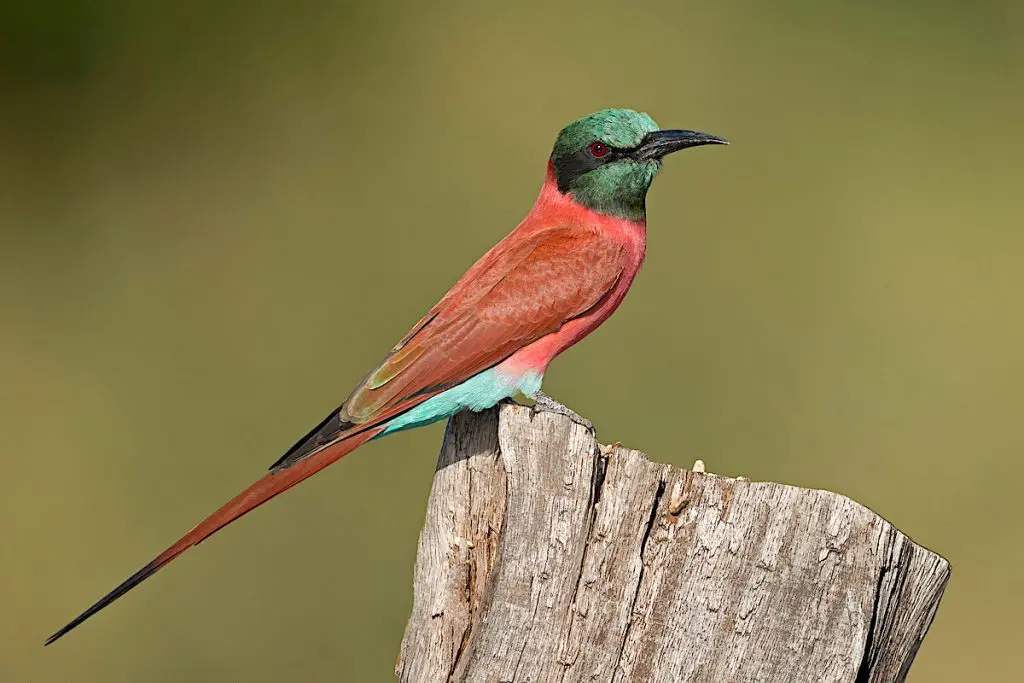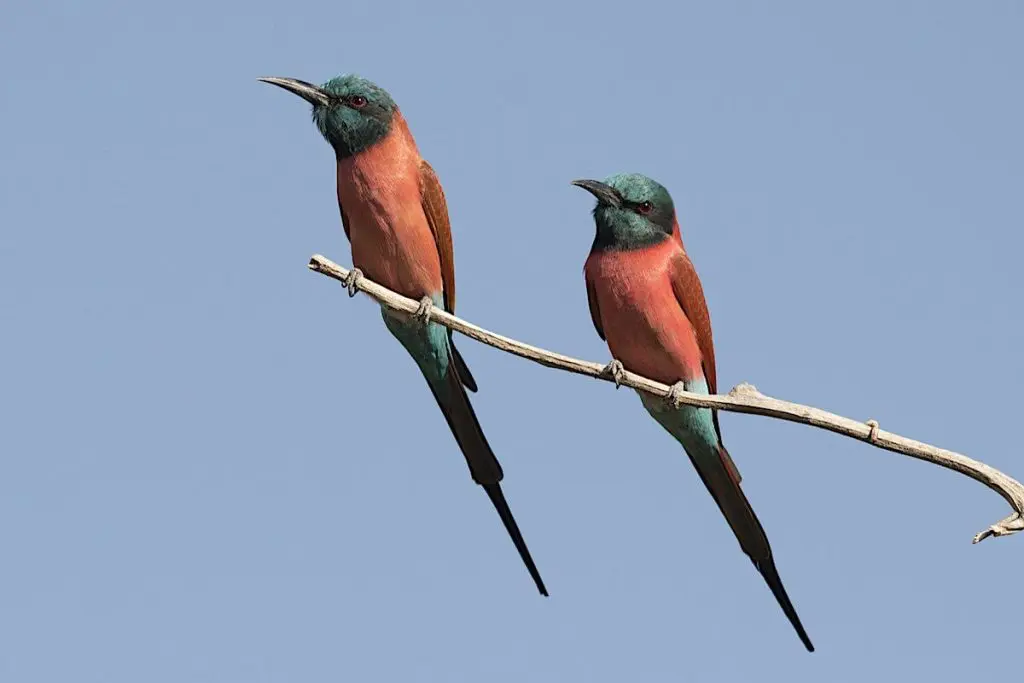Also known as The Northern Carmine Bee-eater or for example the Nubian Bee-eater.
In contrast to Its close relative, The Southern Carmine Bee-eater is identical apart from its Carmine (Red ) throat.
Bird information.
Where is the Carmine Bee-eater found?
The Carmine Bee-eater is found a short drive away from Footsteps in Kartong ( approx 25 minutes away )
In The Gambia for example this delightful bird is not so common and is found only in certain places such as the Bantang quarry in the upper river region and Kartong close to our lodge.
What does it look like?
This species, like other bee-eaters, is a richly coloured, slender bird, predominantly carmine ( Red ) in colour, except for a greenish-blue head and throat and distinctive black mask. This species has red eyes, a black, pointed, decurved beak, and elongated central tail feathers.
The sexes are similar in appearance, and the juveniles can be distinguished from adults by their lack of elongated central tail feathers and the pinkish-brown colouration of their mantle, chest to belly, and flanks. Source Wikipedia
What does it feed on?
They feed primarily on bees and other flying insects, such as grasshoppers, flying ants and locusts. For instance, It does this by keeping watch for flying insects from their perch and then plucking them out of the air using their beaks.
Want to know an interesting Factoid?
They use their bills to dig long horizontal nesting tunnels, often eight feet or more in length.
How does it sound?
It attracts attention to itself with a deep, throaty “tunk” while in flight, and a series of rik notes when perched.


